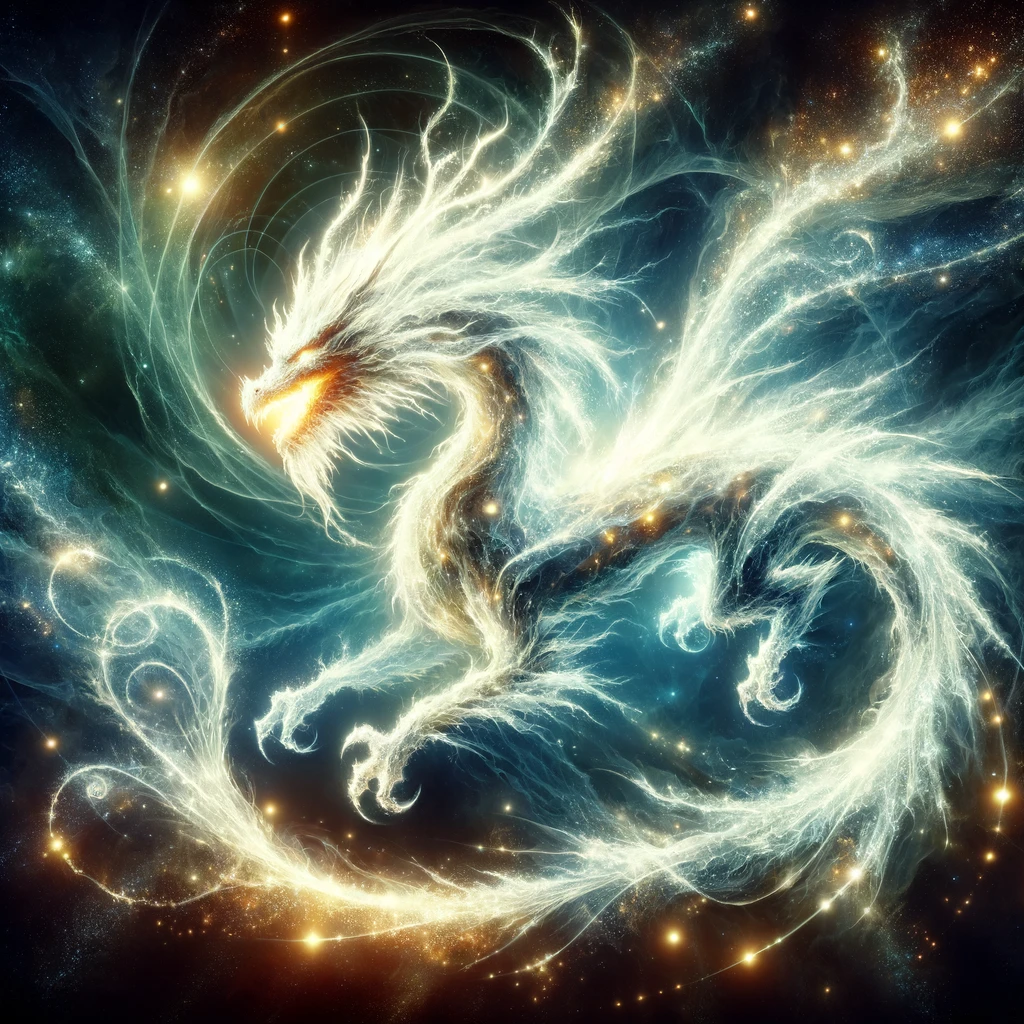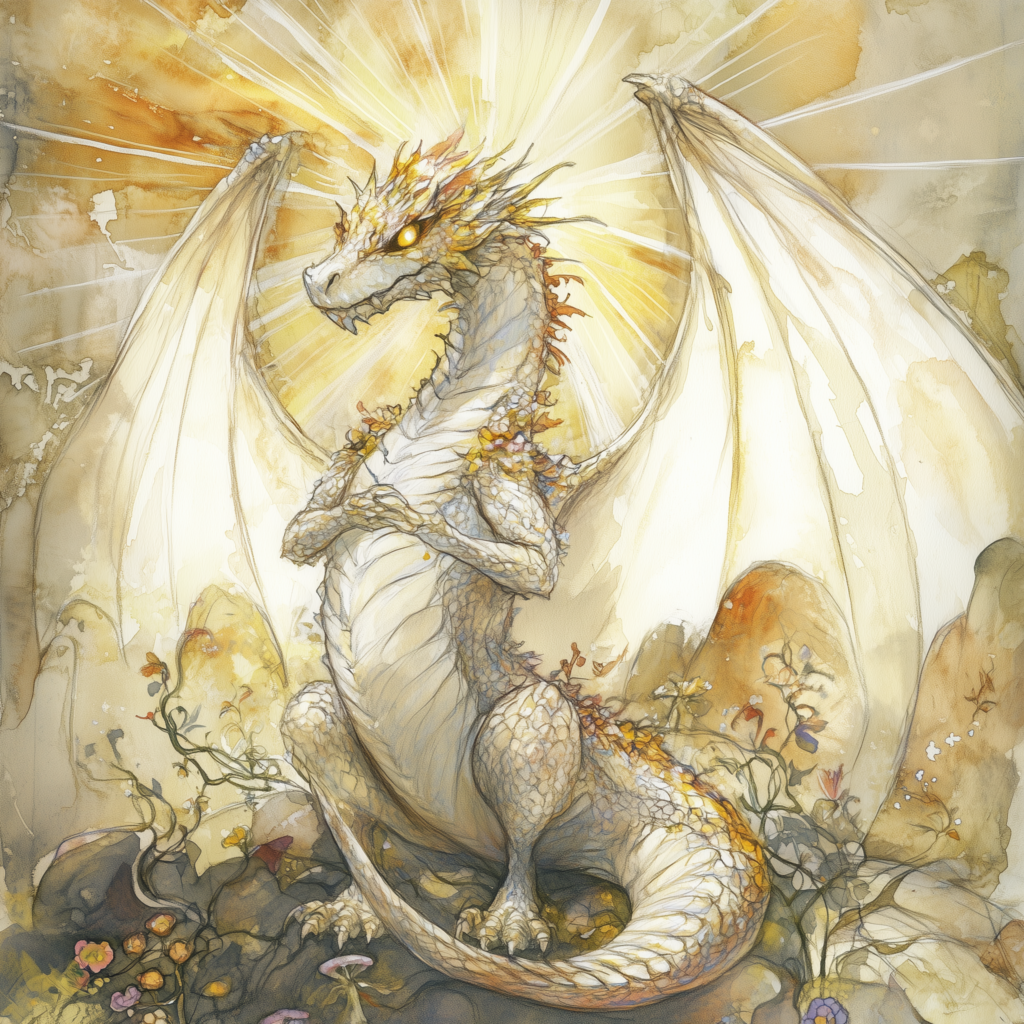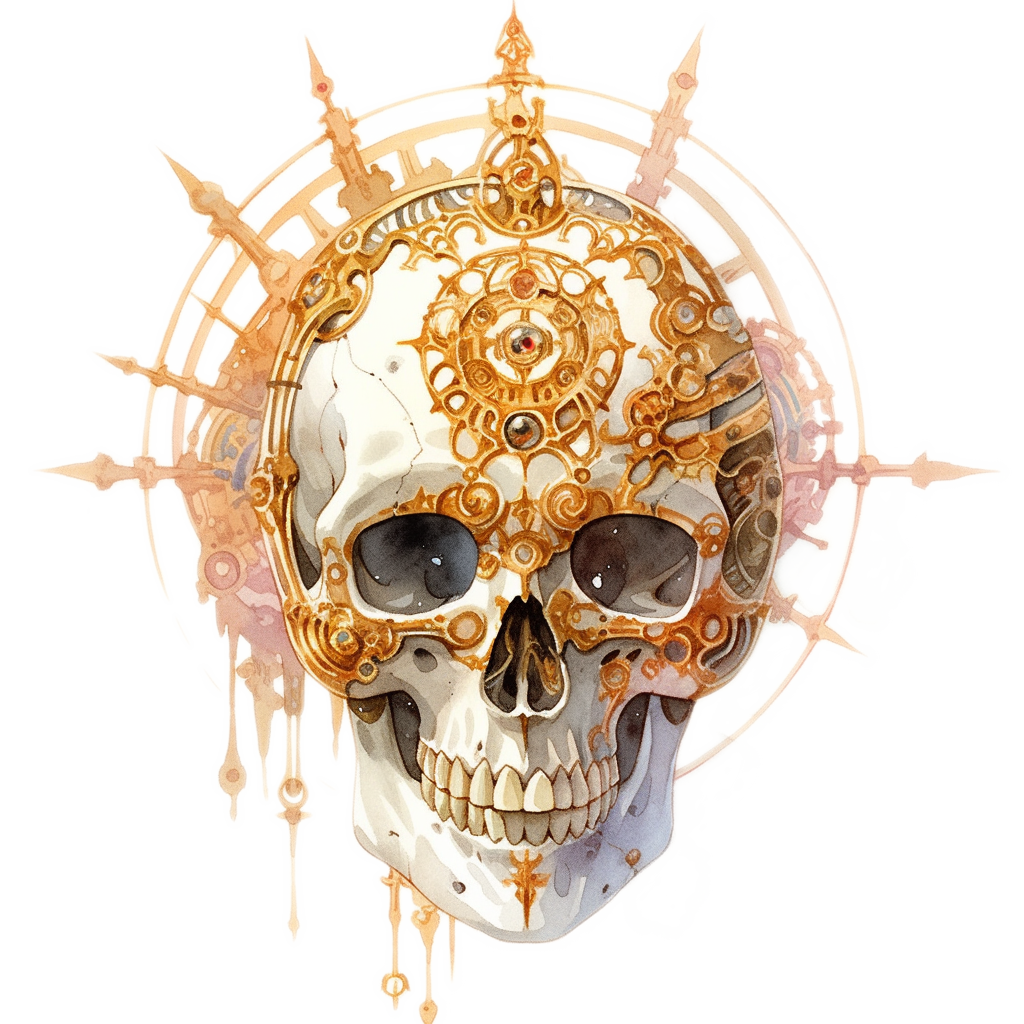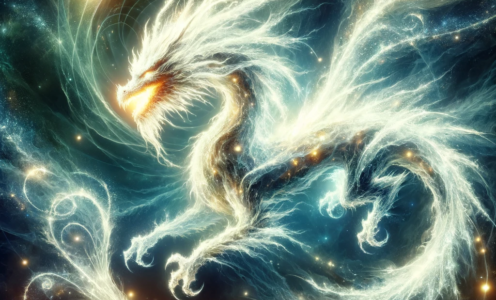Infestation Dragon
Also known as positive energy dragons, positive dragons, swarm dragons
| CLIMATE/TERRAIN: | Positive Energy Plane / any |
| FREQUENCY: | Very Rare |
| ORGANISATION: | Solitary |
| ACTIVITY CYCLE: | Any |
| DIET: | Special |
| INTELLIGENCE: | Supra-Genius (19-20) |
| TREASURE: | See below |
| ALIGNMENT: | Neutral |
| NO. APPEARING: | 1 (2-5) |
| ARMOUR CLASS: | -5 (base) |
| MOVEMENT: | 12, Fly 35, Jump 3 |
| HIT DICE: | 18 (base) |
| THAC0: | 3 (at 18 HD) |
| NO. OF ATTACKS: | 3+ special |
| DAMAGE/ATTACK: | 2d8 / 2d8 / 3d12 (special) |
| SPECIAL ATTACKS: | See below |
| SPECIAL DEFENCES: | See below |
| MAGIC RESISTANCE: | See below |
| SIZE: | G (60′ base) |
| MORALE: | Fanatic (17-18) |
| XP VALUE: | See below |

Infestation dragons, often simply called positive dragons, are creatures brimming with energy and life. Indeed, that energy is their very make-up. Infestation dragons are one of the most energetic creatures known to walk the planes. Motion is one of the grains of their nature; an infestation dragon has never been observed to be standing still.
Infestation dragons look similar in form to gold dragons. Except for the shape, the similarity ends there. They are pure white in colouration, with glowing fluorescent yellow eyes. They are surrounded by a halo of softly glowing light. This light intensifies when the dragon nears a being filled with negative energy (such as most kinds of undead). However, it only applies to dragons that stay on the Positive Material Plane or in similarly extreme circumstances. When infestation dragons arrive on another plane, they become rapidly enveloped in a shroud of plants, fungi, insects and any other kind of creature that can exist in said environment. These living beings grow in the dragon’s flesh (seemingly without causing any discomfort for the dragon), sustained only by positive energy exuded by the dragon. Some of these plants die from overexposure, but others immediately take their place.
Infestation dragons speak their own tongue, the tongue of xag-ya, and a tongue common to all catastrophic dragons. At birth, there is a 21% chance that the dragon can speak with any intelligent creature. This chance increases by 7% per age category.
COMBAT: Infestation dragons despise combat. They view the loss of life as something to be avoided at all costs. They can, and will, attack those that wantonly destroy or cause untimely deaths, but will try to restrain them instead (sometimes those berks die anyway from overbearing energy). Because of their nature, infestation dragons have interesting advantages and disadvantages.
BREATH WEAPON/SPECIAL ABILITIES: Infestation dragons, as noted, are made completely of positive energy. As such, rather than inflict damage, they inflict life. Although this may seem a boon, it has the same affect as being exposed to the Positive Energy Plane. “Damage” inflicted by a positive dragon is added to a victim’s life total. This can even increase hit points beyond maximum capacity. If twice a creature’s life total is exceeded, it explodes in a brilliant display of positive energy. Extra hit points gained in this way remain until lost through normal means.
- An infestation dragon’s breath weapon is a beam of pure positive energy that is 5′ wide and 60′ long. It inflicts the listed damage if a save vs. dragon breath is failed; if such a save is passed only half damage is inflicted. This attack also destroys any creature that is connected to the negative energy plane (all undead but mummies [who have a connection with the positive], shadow dragons, etc.)
- An infestation dragon cast spells and uses its magical abilities at 15th level plus its combat modifier.
- Infestation dragons are born immune to almost all forms of attack. They take double damage from creatures connected to the negative energy plane, however. The hit dice loss incurred by level draining is doubled when it affects a positive dragon. They take normal damage from weapons of +3 enchantment or greater. Their touch destroys any undead that fails a saving throw vs. spells.
- As they age, they gain the following additional abilities: Young: Cure light wounds at will. Juvenile: Cure serious wounds at will. Adult: Cure disease three times per day. Mature Adult: Heal three times per day. Old: Restoration three times per day. Very Old: Resurrection three times per day.

HABITAT/SOCIETY: Infestation dragons are the bane of undead, shadow dragons, and other negative energy creatures. They hate the Doomguard and Dustmen for obvious reasons, and will go out of their way to destroy any members of the factions they meet. No one knows true origins of those dragons. Those, who believe in the legend of the Dawn War, claim that they are Prime dragons (likely gold and crystal ones), twisted by some Primordial. Others point at the fact that Energy planes sit apart from other Inner Planes and have no associated Primordial or archomental. It does seem that infestation and extinction dragons are different from the rest of catastrophic dragons.
Infestation dragons rarely leave their home plane. Those that do only leave for a short while, returning within a few days. They can survive anywhere outside of their home plane indefinitely, except for on the Negative Energy Plane.
Despite their seeming disdain for evil acts and destruction, positive dragons have no predisposition over good or evil, nor law or chaos. All infestation dragons are true neutral. They don’t view morality in a same way other creatures do and feel little to no remorse for any destructive influence they might have on an ecosystems. To them, there’s no difference between which kind of life is prospering, so long as it prospers.
ECOLOGY: Infestation dragons feed on the life energy that permeates the multiverse. They don’t absorb this force from other beings, rather they sense it and gain energy from its presence. Like other catastrophic dragons they can reproduce by creating cataclysms—in their case its stimulating the growth of plants, bugs, bacteria, everything, to the point that the ecosystem cannot bear the strain of new biomass and crumbles into rotting, starving, choking mess. Plagues of locusts, frogs, vines, that’s their thing. Once the invasion ends, a shimmering egg with a new infestation dragon appears where the life is at its richest (say, at the bottom of a stagnant pool, where scavenging bacteria breed). However, unlike other catastrophic dragons, infestation and extinction dragons don’t seem to have an innate urge to multiply. They seem to be very much content to spend their lives on their home planes. Though, considering infestation dragons live in the very Heart of Creation, it’s not like their numbers are going to dwindle anytime soon.
| Age Category | Body (‘) | Tail (‘) | AC | Breath Weapon | Wizard/Priest Spells | MR | Treasure | XP Value |
| 1 | 13-25 | 12-22 | -2 | 4d12+1 | Nil | Nil | Nil | 20,000 |
| 2 | 25-37 | 22-34 | -3 | 6d12+2 | Nil | Nil | Nil | 21,000 |
| 3 | 37-49 | 34-44 | -4 | 8d12+3 | 1 | 35% | E, S, T | 23,000 |
| 4 | 49-61 | 44-56 | -5 | 10d12+4 | 2 | 40% | H, S, T | 24,000 |
| 5 | 56-73 | 56-66 | -6 | 12d12+5 | 2 2 | 45% | H, S, T | 25,000 |
| 6 | 73-86 | 66-76 | -7 | 14d12+6 | 2 2 2 | 50% | H, S, Tx2 | 27,000 |
| 7 | 86-99 | 76-90 | -8 | 16d12+7 | 2 2 2 2 / 1 | 55% | H, S, Tx2 | 28,000 |
| 8 | 99-112 | 90-101 | -9 | 18d12+8 | 2 2 2 2 2 / 2 | 60% | H, S, Tx2 | 29,000 |
| 9 | 112-126 | 101-114 | -10 | 20d12+9 | 2 2 2 2 2 2 / 2 2 | 65% | H, S, Tx3 | 31,000 |
| 10 | 126-140 | 114-126 | -11 | 22d12+10 | 2 2 2 2 2 2 2 / 2 2 2 | 70% | H, S, Tx3 | 32,000 |
| 11 | 140-154 | 126-139 | -12 | 24d12+11 | 2 2 2 2 2 2 2 1 / 2 2 2 2 | 80% | H, S, Tx3 | 33,000 |
| 12 | 154-168 | 139-152 | -13 | 26d12+12 | 2 2 2 2 2 2 2 2 / 2 2 2 2 | 85% | H, S, Tx4 | 35,000 |
Source: John Kastronis, Jon Winter-Holt, Margarita. Canonwatch: this elemental dragon used to be simply called ‘positive energy dragon’ and didn’t have the infestation cataclysm angle to them. We made a decision to combine those homebrew dragons with catastrophic dragons from 4e, who were named after natural disasters and other calamities.


